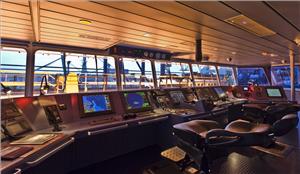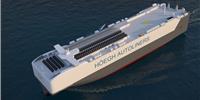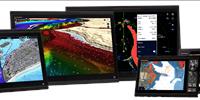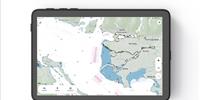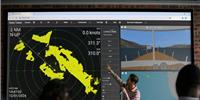George Devereese, Loss Prevention Executive at UK P&I Club, discusses issues of potential reliance on ECDIS, and advises that seafarers undergo the necessary navigational training.
While Electronic Chart Display and Information Systems (ECDIS) have proved extremely helpful for navigation at sea, there are issues that should be considered when it is in use.
Seafarers should always ensure that ECDIS charts are updated on a weekly basis. When paper charts were in common usage, this could be a time consuming and laborious process. With ECDIS, updates can be downloaded through various applications such as Chart Tracker in a matter of minutes. While the vast majority of vessels ensure that charts do remain up to date, failing to do so can result in significant penalties, including the vessel being deemed unfit to be put to sea and being detained in port.
An annual test has been proposed to ensure ECDIS is running correctly, and a test CD can be acquired via an electronical navigational charts service provider. As several companies provide these charts, it raises the question of whether the charts are always identical.
Manufactures of ECDIS are developing uniform standards, which should mean all information is replicated across all systems. However, while the information may be the same, ECDIS systems can be operated in subtly different ways. It is therefore important for crew to be comfortable on the ECDIS system that they are operating. A crew’s training and experience should be examined, and an assessment made as to whether they require additional training on in-house simulators provided by the shipping company.
An issue has been raised that the ECDIS alarm system can be over-zealous, such as triggering alarms whenever a vessel passes over an underwater cable, which can lead to complacency when genuine alarms are sounded. As ECDIS has developed, these spurious alarms have become less common. An overload of information should always be avoided, however the most stringent settings should be employed when passage planning.
A larger problem can be issues with chart ranging, whereby navigators are able to zoom in or out on charts to access varying levels of detail (e.g. open sea, coastal, pilotage). When it comes to passage planning, it can be difficult to ensure no potential hazards are missed, and there have been cases when navigators have used the wrong sized charts, adding to the risk of a vessel hitting an obstacle. Navigators can misunderstand the ranging of the charts, by zooming too far in or out. It is vital that navigators are correctly trained in ECDIS chart ranging, as they may grow complacent regarding the ability of the system to identify hazards.
While ECDIS is an extremely useful aid for seafarer navigation, seafarers must remember that it is an aid to navigation, and not a replacement for all navigational skill. It is a seafarer’s responsibility to ensure the safety of a vessel, ECDIS is fallible, and can contain errors.
There is also the possibility of the system failing, in which case a seafarer will need to resort to traditional methods of navigation. Seafarers should continue to be trained in a variety of navigational techniques, hold a paper chart ‘back up’ portfolio, and run table top exercises with the Officer of the Watch to maintain their familiarity with paper charts and proper position fixing routines. An over reliance on ECDIS can cause these traditional skills to fade, and potentially lead to incidents, and the industry should make sufficient navigational training widely available.
